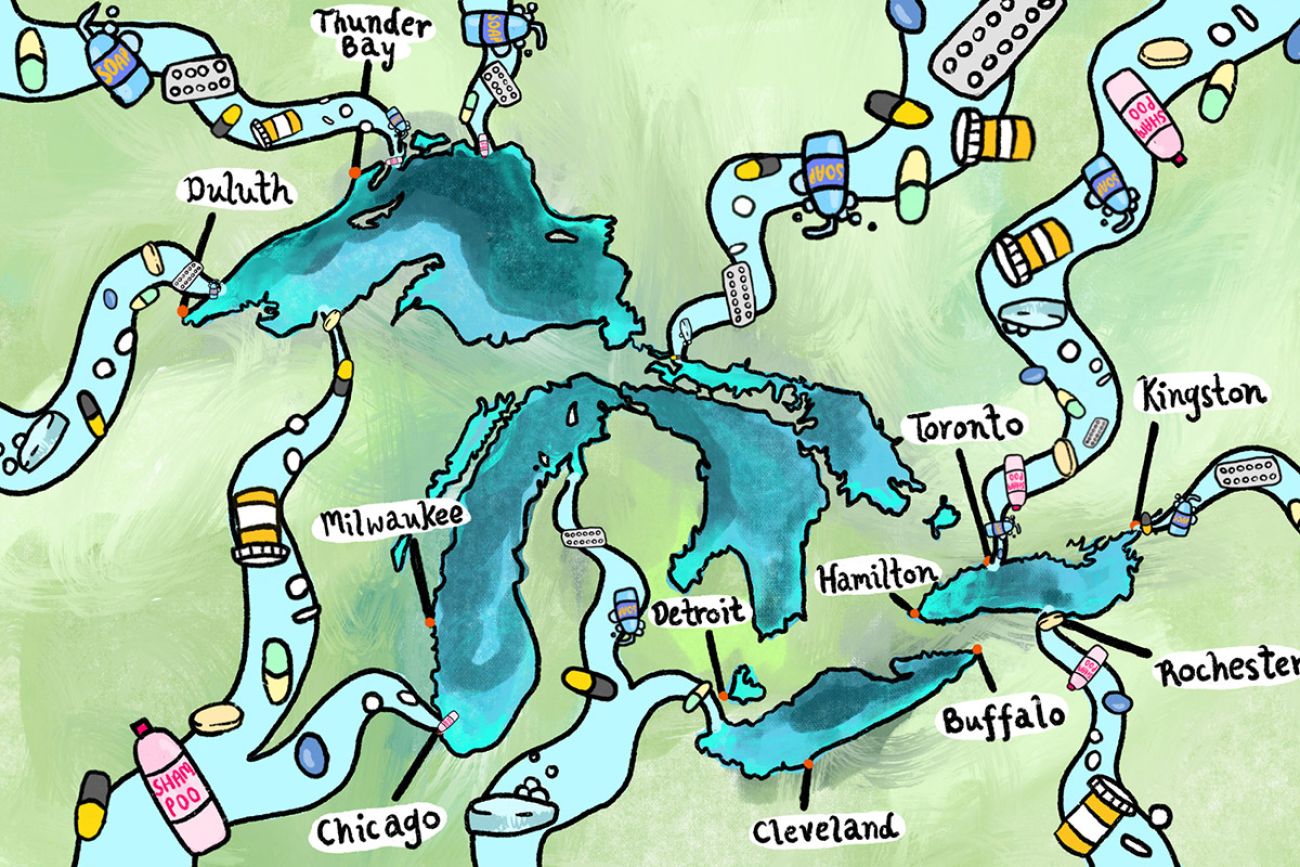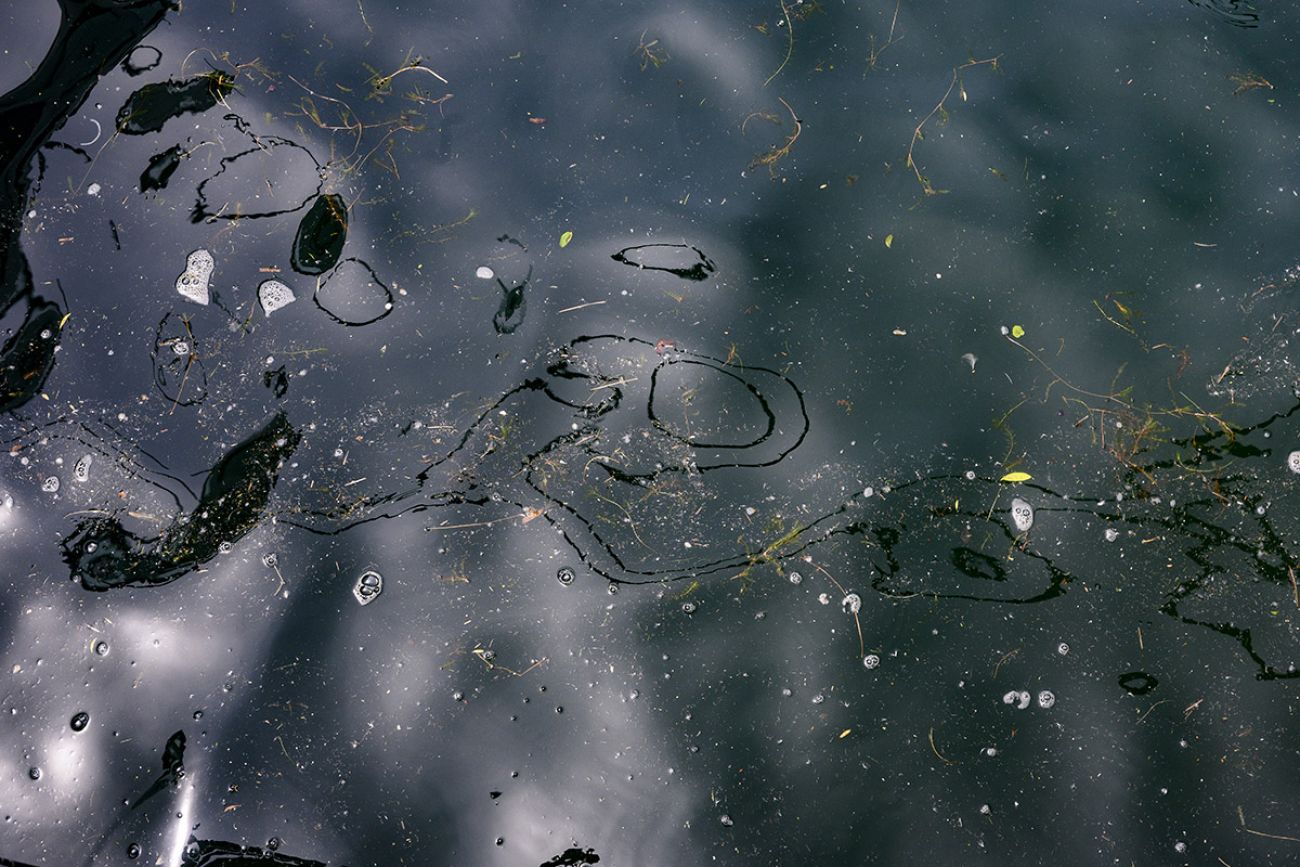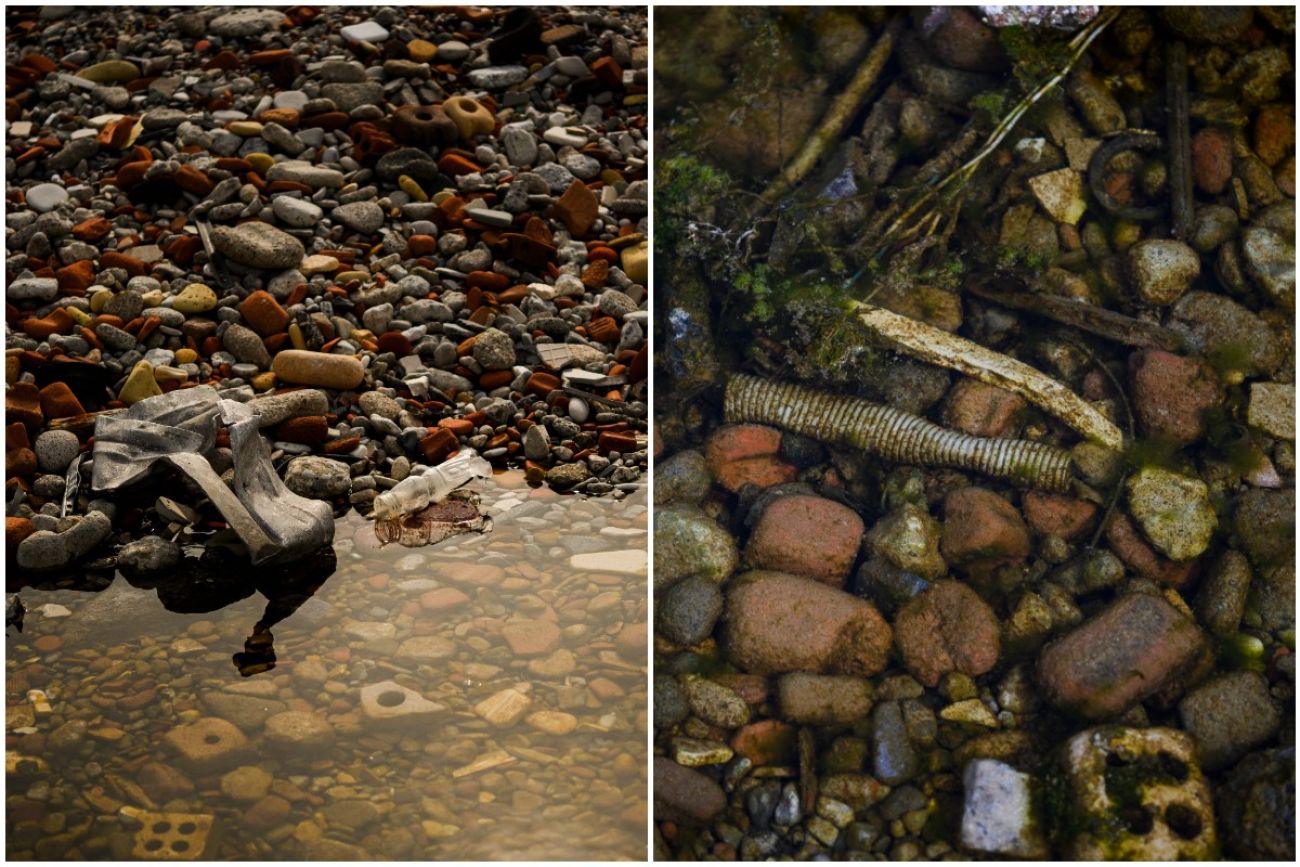Drugs, microplastics, forever chemicals a growing concern in Great Lakes

Rania Hamza calls it “a coincidence” that an engineer, a biologist and a lawyer at the same Toronto university were independently worrying about the harmful substances and chemicals being flushed down Ontario’s toilets. Three years ago, after figuring out they were all interested in the same thing, the unlikely trio came together to highlight a major gap in policy.
The release of everyday wastewater from our homes and businesses into the environment is Canada’s largest source of water pollution. This dirty water is full of toxic substances that can harm our lakes and rivers. Some is removed or treated, like the phosphorus in sewage that creates harmful algae blooms in water. But many more unmonitored and invisible substances — or “contaminants of emerging concern” — in wastewater end up being dumped into the Great Lakes, which hold around 20% of the world’s surface freshwater and about 85% of North America’s.

This story is part of a Great Lakes News Collaborative series examining the links between the region’s changing climate, its abundant water and its residents’ health.
The collaborative’s five newsrooms — Bridge Michigan, Circle of Blue, Great Lakes Now and Michigan Radio and The Narwhal — are funded by the Charles Stewart Mott Foundation.
In Canada, no rule or law to prevent emerging contaminants from entering our water — something Hamza and her colleagues want to change.
Hamza is a civil engineering professor at Toronto Metropolitan University who loves experiments and lab work. For the past several years, she’s been studying the effectiveness of wastewater engineering, or the process of cleaning dirty water flushed or drained from a toilet or sink before it is released back into the environment. She found that thousands of unmonitored compounds weren’t being removed in Ontario and that many could be harmful to humans and aquatic animals alike.
“We stopped tracking how many after 11,000,” she told The Narwhal of the work she’s doing with chemical and biology professor Kim Gilbride and law professor Patricia Hania, who also work at Toronto Metropolitan University.
Related:
- Birds in Great Lakes, elsewhere in peril: ‘We need to pay attention’
- In warming Great Lakes region, water, heat can be an unhealthy combination
- Return of bald eagles to the Great Lakes could hold lessons for humans
In the Great Lakes region, emerging contaminants include pharmaceuticals and ingredients found in personal care products such as shampoos and face washes. Microplastics — small pieces of plastic debris — are another significant concern. There are also per- and polyfluoroalkyl substances, commonly known as PFAS, the umbrella term for a group of thousands of chemicals used to make products resistant to water, stains and heat: while some are regulated by Health Canada, most of them aren’t.

Interwoven into many aspects of daily life, these chemicals and contaminants easily find their way into our water systems. When you wash your nonstick frying pan or wear your raincoat in a thunderstorm, you’re sending PFAS down the drain. When you pee after taking Tylenol or heart medication, pharmaceuticals go down the toilet. And tiny plastic particles end up in our water thanks to car tires, detergent pods and synthetic fabrics like polyester.
All of this dirty water ends up at Ontario’s wastewater treatment facilities. Built in the 1960s and 1970s, they’re not equipped with the technology needed to remove a slew of modern contaminants. They do remove certain substances, like ammonia and phosphorous, before water is released back into Ontario’s lakes, including Erie, Ontario, Superior and Huron. But with the population around the Great Lakes increasing and aging rapidly, the type and amount of contaminants entering our waterways is increasing and our outdated cleaning systems aren’t keeping up. The Toronto Metropolitan team says it’s time for Canada to change that.
‘We live in a chemical world’ that Canada’s laws aren’t designed to keep out of our water
In her lab, Hamza became worried by the sheer quantity of chemicals and plastics she kept finding in wastewater samples. She started asking questions beyond the scope of a civil engineer. How bad were these substances for human health? And why isn’t there a policy that demands the removal of these substances from wastewater?
Those questions were already being explored by Gilbride and Hania. With the help of a federal research grant, they pooled their expertise and confirmed there was no regulation preventing many toxins from being “legally discharged into water sources that are drinking water and fish habitat,” Hania said.
“I don’t know if fish have headaches, but having Tylenol particles in Lake Ontario is probably not a good thing,” Gilbride said. “The result of our experiments show we need to put less of these compounds in the environment — like way, way less. The question is, how do we do that?”
A growing body of research shows these unregulated chemicals are already ubiquitous in the environment. In May, a team led by the American Chemical Society, which included staff from Environment and Climate Change Canada, released a study that found PFAS present in the air, rain, atmosphere and water across the entire Great Lakes basin, which provides drinking water for nearly 60 million people. PFAS are known as “forever chemicals” because of how long they take to break down in the body and in the environment, where they can remain present for thousands of years if not removed or disposed of properly.

Other studies show the same is true of microplastics, which are generally resistant to biological and chemical treatment processes. Also concerning is that researchers agree that between 30% and 90% of the oral medication we use ends up going down the toilet. This includes antibiotic residue that could have yet-unknown impacts on aquatic and human life. Ontario’s wastewater treatment plants aren’t designed to remove any of these substances, technologically, and aren’t required to legally.
Wastewater is regulated under the federal Fisheries Act, which mandates treatment plants remove certain chemicals that are harmful to aquatic life, such as ammonia and phosphorus. Then there’s the Canadian Environmental Protection Act, which broadly regulates water quality across the country, including in the Great Lakes: it requires facilities to collect and report data on up to 87 different substances, leaving out many contaminants from pharmaceuticals and personal care products. Environment and Climate Change and Fisheries and Oceans Canada did not respond to questions from The Narwhal by the time of publication.
Provincial policies are even further behind. In 2019, Ontario’s Auditor General reported that municipal sewage as well as wastewater from industrial sites may contain toxic chemicals, pharmaceuticals and microplastics, which then might be entering Ontario lakes. The provincial government is able to order treatment facilities to stop or limit the release of certain substances into the water, but most contaminants of emerging concern are not on the list of regulated substances. The Ontario Ministry of Environment did not respond to questions from The Narwhal by the time of publication.
This being Canada, there is a jurisdictional challenge too. The Toronto Metropolitan researchers say existing federal and provincial regulations don’t work in tandem. They need to be “integrated” into an overarching policy that considers water and impacts to it holistically, Hania said.
And while the laws that protect water are created at the federal level, wastewater facilities are effectively managed by cities and towns with provincial oversight. This creates additional cross-jurisdictional challenges.
“We live in a chemical world, so why aren’t we applying a cautionary approach to these chemicals?” Hania said.

Technology and laws to address new water contaminants exists — just not in Canada
When it comes to emerging contaminants, Ontario lags far behind other Great Lakes governments. In 2020, Michigan began implementing an industrial pretreatment program requiring wastewater facilities to measure quantities of seven PFAS entering their plants. Above a certain threshold, industry is mandated to reduce them. New York has also created a detailed approach to tackle PFAS that includes allocating funding to upgrade water and wastewater infrastructure. In 2022, the state banned the sale of certain household cleaning and personal care products that include contaminants.
Hamza, Gillbride and Hania believe the best way Canada can protect its water in the Great Lakes and beyond is to ban products containing these contaminants so they don’t seep into our ecosystem. The federal government has made some moves — in 2019, Canada banned the sale of toiletries with microbeads and in 2022, banned six single-use plastic items— but given the scope of the problem, the researchers say it’s not enough.
The way Canadian legislation works, “if you can demonstrate there’s a risk, you can stop it,” Gillbride said. That approach, the researchers said, fails to proactively address the issue, as they watch levels of new contaminants in our water rise.
Hamza said technology to remove most PFAS and all pharmaceuticals is being developed rapidly, but requires dedicated funding to become a reality. The global importance of the Great Lakes means instituting such systems here soon is crucial, she said.
“Contaminants keep changing and growing,” Hamza said. “We’ll get much more. Are we really going to wait to see humans impacted before we start addressing this?”
Michigan Environment Watch
Michigan Environment Watch examines how public policy, industry, and other factors interact with the state’s trove of natural resources.
- See full coverage
- Subscribe
- Share tips and questions with Bridge environment reporter Kelly House
Michigan Environment Watch is made possible by generous financial support from:
Our generous Environment Watch underwriters encourage Bridge Michigan readers to also support civic journalism by becoming Bridge members. Please consider joining today.
See what new members are saying about why they donated to Bridge Michigan:
- “In order for this information to be accurate and unbiased it must be underwritten by its readers, not by special interests.” - Larry S.
- “Not many other media sources report on the topics Bridge does.” - Susan B.
- “Your journalism is outstanding and rare these days.” - Mark S.
If you want to ensure the future of nonpartisan, nonprofit Michigan journalism, please become a member today. You, too, will be asked why you donated and maybe we'll feature your quote next time!






